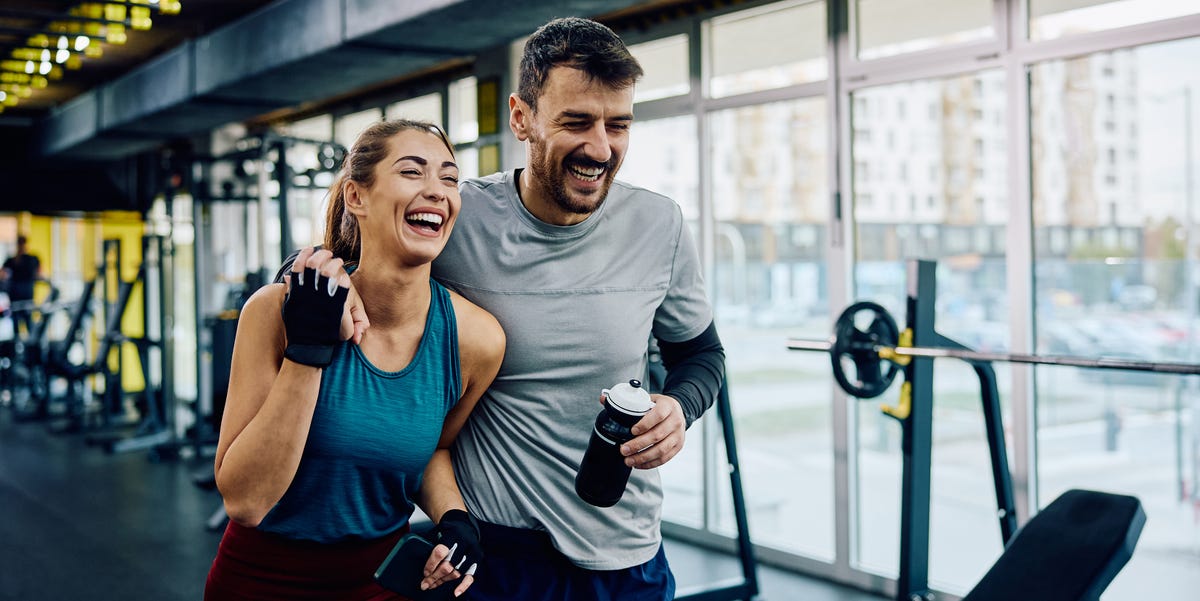When we asked Women’s Health Collective coach Amanda Ngonyama whether men and women should exercise differently, her reply was, ‘Absolutely’. ‘Differences in muscle fiber composition, hormone levels, and how your nervous system functions mean that what works for women won’t necessarily work for men – and vice versa,’ she explains. ‘I’m not saying those gym sessions with your husband won’t have been beneficial, but following a gender-specific training plan will certainly help optimise your results.’
Here are all the ways in which men and women should exercise differently, according to the aforementioned factors.
1.Women need less rest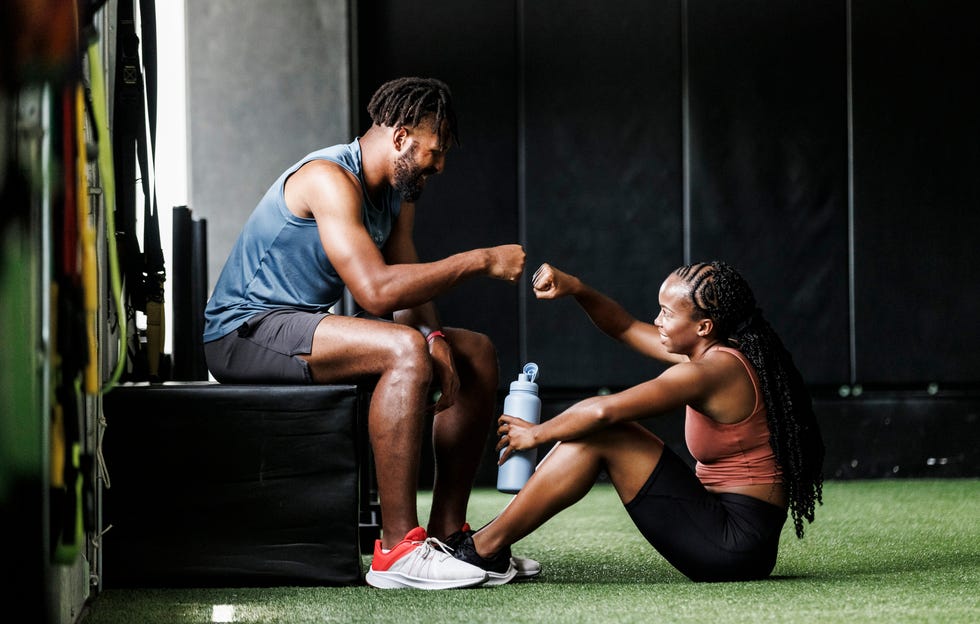
The Good Brigade//Getty Images
‘Females have more type 1 muscle fibers, also known as slow-twitch fibers, which have a greater blood supply and as a result, greater endurance, meaning you can train for longer without tiring. They also have higher levels of oestrogen – an anticatabolic hormone, which prevents the breakdown of muscle tissue. Studies show that both of these factors combined mean that women can recover faster than men during workouts, using shorter rest periods. Consider incorporating supersets, performing two exercises back-to-back before resting; your husband would be better off sticking with single sets.
2. Women can target the same muscle group more per week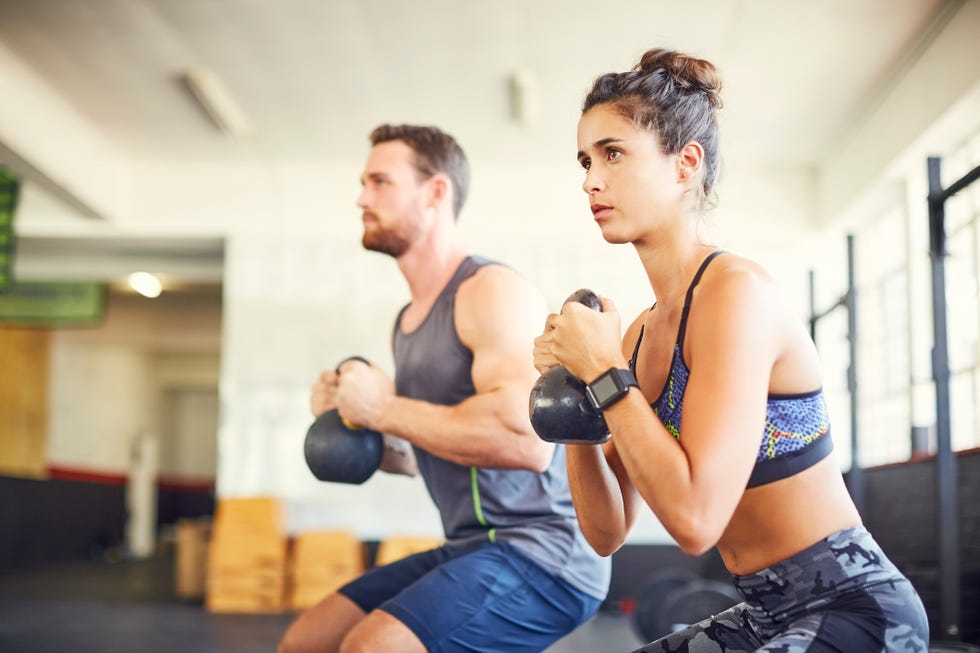
Neustockimages//Getty Images
‘According to research in the International Journal of Sports Medicine, the rate of microscopic muscle tears that occur during exercise is higher in men than women, meaning you experience muscle damage at a slower rate, and could safely and effectively train the same muscle group three-four times per week, if this suits your goal.’
3. Slower tempos suit women better 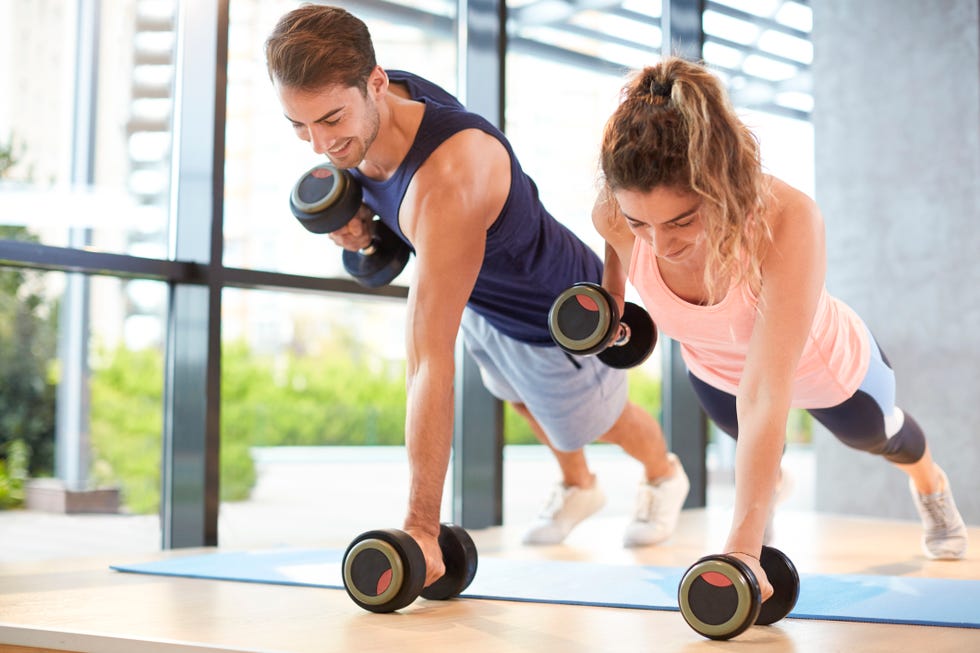
stockvisual//Getty Images
‘The part of the brain that controls movement, known as the motor cortex, is larger in men, with research in the Journal of Sports Medicine and Physical Fitness showing that, as a result, they are able to react faster and generate more force. You would benefit from lifting with more control and less explosion.’
4. Women don’t experience as much muscle ‘burn’ 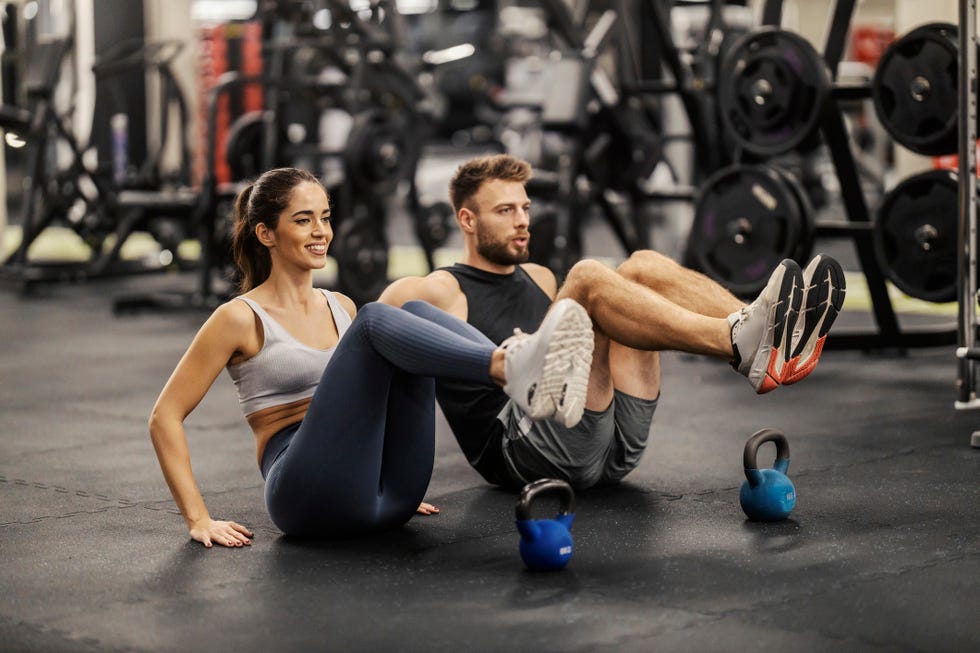
dusanpetkovic//Getty Images
‘Many studies show that because females have smaller heart sizes, higher oestrogen levels and a less pronounced sympathetic nervous system response, their blood pressure is lower during exercise. This means less production of hydrogen ions (a substance released during muscle metabolism that makes your muscles burn), because blood flow is directed to your working muscles more efficiently. In turn, you may not feel the so-called ‘burn’ as quickly or as intensely, meaning you can handle higher workout volumes.’
5. Women can perform more reps and sets before fatiguing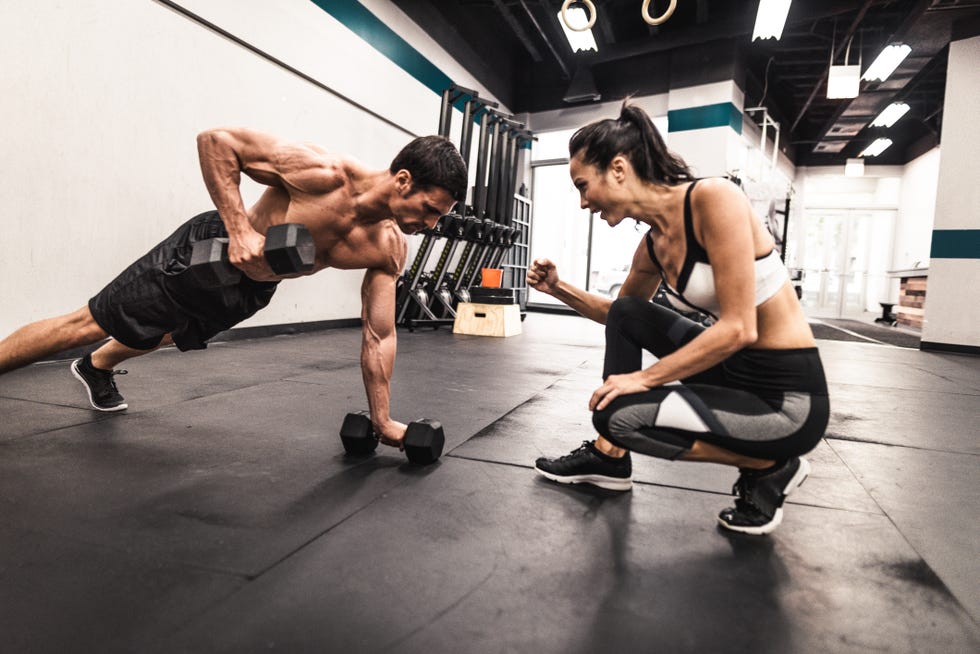
franckreporter//Getty Images
‘Between the aforementioned lower blood pressure, more type 1 muscle fibers and higher levels of anti-catabolic oestrogen (which prevents muscle damage), females are able to perform more reps and sets, even with heavy lifts, before reaching fatigue, compared to men.
‘Keep in mind that while studies show that both men and women typically lose 3-5 per cent of muscle mass per decade after the age of 30 (a process known as sarcopenia), this accelerates when women begin going through the perimenopause and experience declining levels of oestrogen. Building a strong base of muscle mass through regular strength training before you hit this age will help calm this rate of change. The sooner you start, and the more tailored your approach, the better.’
RELATED STORIES
As Women’s Health UK’s fitness director (and a qualified yoga teacher), Bridie Wilkins has been passionately reporting on exercise, health and nutrition since the start of her decade-long career in journalism. She secured her first role at Look Magazine, where her obsession with fitness began and she launched the magazine’s health and fitness column, Look Fit, before going on to become Health and Fitness writer at HELLO!. Since, she has written for Stylist, Glamour, Cosmopolitan, Marie Claire, Elle, The Metro, Runner’s World and Red.
Now, she oversees all fitness content across womenshealthmag.com.uk and the print magazine, spearheading leading cross-platform franchises, such as ‘Fit At Any Age’, where we showcase the women proving that age is no barrier to exercise. She has also represented the brand on BBC Radio London, plus various podcasts and Substacks – all with the aim to encourage more women to exercise and show them how.
Outside of work, find her trying the latest Pilates studio, testing her VO2 max for fun (TY, Oura), or posting workouts on Instagram.
